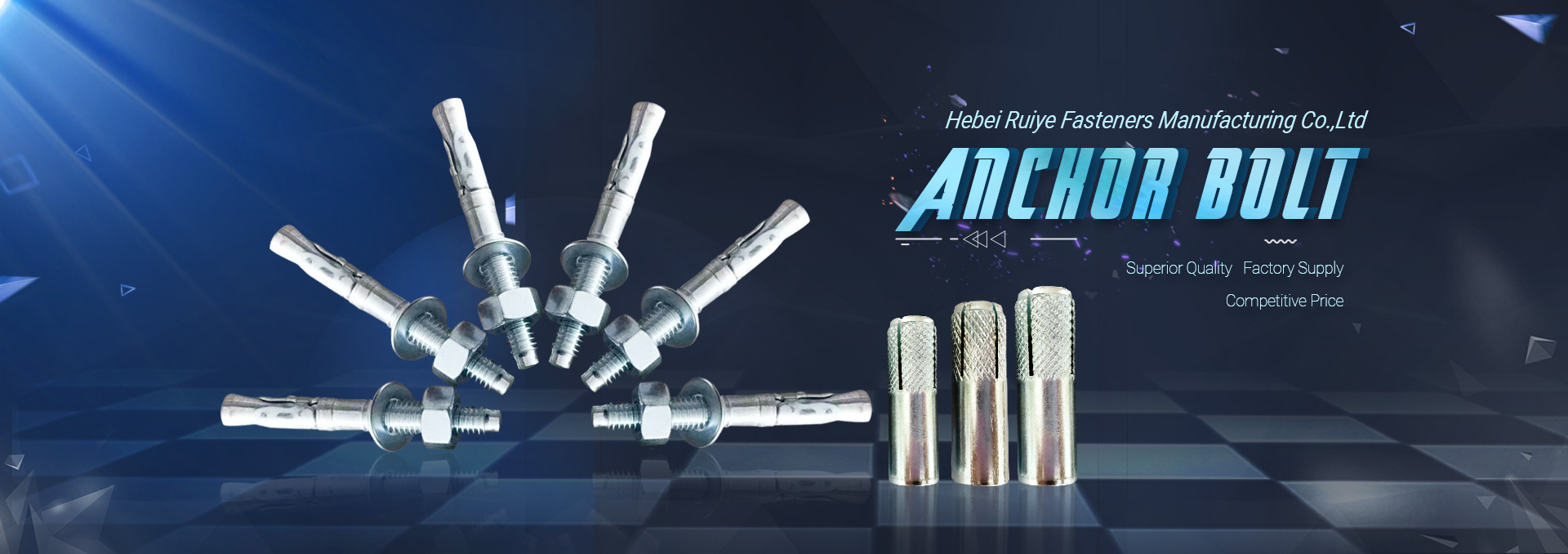After learning about the fastener forming process, the little whites who just entered the fastener family often hear the word blackening when they understand the following process. In fact, the simple understanding of blackening treatment is that steel is easy to oxidize, and an oxide layer must be artificially created on the surface of the formed fastener to isolate further oxidation. So what are the specific processing methods? Then let's talk about the blackening methods of screws and nuts.
The surface treatment of steel fasteners generally has two kinds of alkaline oxidation method and acidic oxidation method. The acid oxidation method is also called "bluing". Use alkaline oxidation or acid oxidation; the purpose is to form an oxide film on the metal surface to prevent the metal surface from being corroded. The oxide film formed on the metal surface after the "blue" treatment, the outer layer is mainly tetraoxide Tri-iron, the inner layer is ferrous oxide, the color is black blue or deep black.
Why do screws and nuts need to be blackened? What is phosphating?
1. Alkaline oxidation method:
The commonly used methods for blackening treatment are the traditional alkaline heating blackening and the later normal temperature blackening. However, the effect of normal temperature blackening process is not very good for low carbon steel. A3 steel is better with alkaline blackening, and alkaline blackening is subdivided. There is a difference between one blackening and two blackening. The main components of blackening liquor are sodium hydroxide and sodium nitrite. The latitude of the temperature required for blackening is relatively large, and a good surface can be obtained between 135 degrees Celsius and 155 degrees Celsius, but the time required is somewhat lengthy. In actual operation, it is necessary to pay attention to the quality of derusting and degreasing before the blackening of the workpiece, and the passivation immersion oil after the blackening. The quality of the blackening often changes due to these processes. The abrasion resistance of steel blackened by high-temperature alkaline boiling is higher than that of steel blackened at room temperature.
2. Acidic oxidation method:
is also called "phosphating treatment" (most military enterprises in the world adopt this method), and it has better abrasion and corrosion resistance than "alkaline oxidation blueing".
1. Alkaline oxidation method "bluish" liquid medicine
1. Recipe (available in chemical stores): Sodium nitrate 50~100g Sodium hydroxide 600~700g Sodium nitrite 100~200g Water 1000g
2. Preparation method: After measuring according to the formula, under stirring conditions, add all the materials in order, dissolve, and mix evenly. (I am using a discarded iron bucket)
3. Process:
(1) The metal surface must be cleaned, dried, and degreasing before it can be processed. It is recommended to use washing powder and water to scrub, and then soak in 1:100 diluted hydrochloric acid for 1-5 minutes to remove oil and impurities.
(2) Put the parts to be processed into an iron bucket and "boil" with the solution for about 1 hour.
(3) After the metal is "blued", it is better to rinse with hot soapy water for a few minutes, and then rinse with cold water. Then, rinse with hot water and blow on. After comparison, the surface is coated with engine oil for sealing protection.
1. Alkaline oxidation method "bluish" liquid medicine
1. Formula: 50-100 grams of sodium nitrate, 600-700 grams of sodium hydroxide, 100-200 grams of sodium nitrite, 1000 grams of water
2. Preparation method: After measuring according to the formula, under the condition of stirring, add each material in order, dissolve, and mix evenly.
3. Description:
(1) The metal surface must be washed and dried before the "hair basket" treatment can be carried out.
(2) The conditions for the "blueing" treatment of metal devices are related to the carbon content in the metal. The temperature of the "blueing" solution and the processing time of the metal devices can be referred to the following table.
Carbon content in metal% Working temperature (℃) Processing time (minutes)
Start stop
>0.7 135-137 143 10-30
0.5-0.7 135-140 150 30-50
<0.4 142-145 153-155 40-60
Alloy steel 142-145 153-155 60-90
(3) Analyze the content of sodium nitrate, sodium nitrite and sodium hydroxide in the solution every one week or so in order to supplement the relevant ingredients in time. Generally, all the solutions should be replaced after half a year.
(4) After the metal is "blued", it is better to rinse with hot soapy water for a few minutes, and then rinse with cold water. Then, rinse with hot water and blow on. 2. "Phosphating treatment" chemical solution by acid oxidation method
1. Recipe (all available in chemical stores):
Phosphoric acid 3~10g Calcium nitrate 80~100g Manganese peroxide 10~15g Water 1000g
2. Preparation method: After measuring according to the formula, under constant stirring, add phosphoric acid, manganese peroxide and calcium nitrate in sequence, dissolve and mix well.
3. Description:
(1) Metal parts can be "blued" only after they have been cleaned and dried.
(2) The protective film obtained by this method is black, and its main components are composed of calcium phosphate and iron oxides, and its corrosion resistance and mechanical strength exceed the protective film obtained by alkaline oxidation.
4. "Blue" working temperature is 100℃, processing time is 40~45 minutes. When dealing with carbon steel, the content of phosphoric acid in the chemical solution is controlled at 3 to 5 g/l; when dealing with alloy steel or cast steel, the content of phosphoric acid is controlled at 5 to 10 g/l. Attention should be paid to regularly analyze the phosphoric acid content of the chemical liquid.
5. The cleaning method of metal parts after "blueing" treatment is the same as above.
Post time: Nov-13-2020

